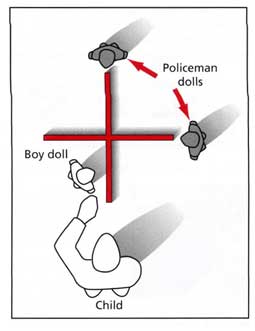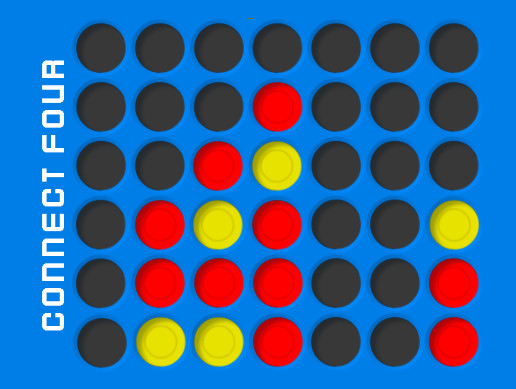Cognitive development: Piaget
 Children think differently than adults. They believe in Santa Claus and the "tooth fairy". They often don't understand when an adult is using irony. And they are definitely not able to do advanced algebra. The field of cognitive development studies how a child develops over time in terms of thinking, problem-solving, language, perception and information processing.
Children think differently than adults. They believe in Santa Claus and the "tooth fairy". They often don't understand when an adult is using irony. And they are definitely not able to do advanced algebra. The field of cognitive development studies how a child develops over time in terms of thinking, problem-solving, language, perception and information processing.
Like many early theorists, Swiss psychologist Jean Piaget believed that physical maturation was an essential component of cognitive development. However, he went further - arguing that children are “active scientists” who learn by interacting with their social and physical environment. Piaget suggested that children use strategies in thinking and problem solving that reflect different stages of cognitive development.
Piaget claimed that children’s development progresses through a series of cognitive stages, with each stage having distinctly different qualities. He saw the stages as a way to describe changes in the logic of thinking. His view was that the sequence of stages was the same for all humans - that is, the way in which we develop is universal.
Stage 1: Sensorimotor intelligence (age 0–2 years)
According to Piaget, the newborn baby relies on innate reflexes and has limited knowledge. In the sensorimotor stage, the child learns through movements and sensations. Knowledge simply arises from looking, touching, hearing, sucking, grasping and putting things in the mouth. The child gradually comes to have an idea of what different objects are like. To begin with, the child’s movements are not at all purposeful because he or she has no control over them. However, when children acquire more control over their bodies, they learn that a specific movement - like bashing a toy or pulling the tail of the cat - will have specific consequences.
At around eight months old, children develop object permanence - that is, the idea that objects continue to exist even when they can no longer be seen. Piaget found that a 4-month-old will not look for a toy if it is hidden under a cloth. It is as if the rule “out of sight, out of mind” applies at this stage. However, an 8-month-old will lift the cloth, knowing that she will find the toy underneath. Between 8 and 12 months, the child will keep looking for the object in the place where he or she found it the last time. This happens even if the child watches someone hide it in a new place. According to Piaget, it is not until they are around 18 - 24 months old that toddlers possess fully developed object permanence.
Research in psychology: Baillargeon (1986)
Baillargeon carried out a series of experiments with the aim of testing Piaget's claim that children do not demonstrate object permanence until around 6 - 8 months.
In one experiment four-month-old female infants saw a toy car roll along a track that was partly hidden by a screen. A large toy mouse was placed either on the track or behind the track - and then hidden behind a screen. The infants stared longer when the mouse stood on top of the track as opposed to in back of the track, suggesting that they were surprised to see the car reappear from behind the screen when the mouse stood in its path. The findings in Baillargeon's impossible situation test have indicated that babies obtain object permanence earlier than Piaget had claimed - that is, infants aged 3.5 months and older are able to represent and to reason about hidden objects.
See the video below to observe a part of their research.
Stage 2: Pre-operational thought (age 2–7 years)
 At the beginning of this stage, the child learns to speak. Children become capable of thinking in symbolic terms - that is, they can form ideas, but they can only focus on one aspect of an object or situation at a time, and they cannot transfer knowledge from one situation to another. Piaget argued that the child’s understanding of the world is based on egocentrism - the child can only see the world from his or her own viewpoint. The child does not understand that others might see things differently.
At the beginning of this stage, the child learns to speak. Children become capable of thinking in symbolic terms - that is, they can form ideas, but they can only focus on one aspect of an object or situation at a time, and they cannot transfer knowledge from one situation to another. Piaget argued that the child’s understanding of the world is based on egocentrism - the child can only see the world from his or her own viewpoint. The child does not understand that others might see things differently.
Piaget argued that the child can only see the world from his or her own viewpoint. The child does not understand that others might see things differently. Piaget saw egocentrism as a cognitive limitation—that is, children cannot understand that someone else’s point of view might be different from their own.
Research in psychology: Piaget and Inhelder (1956)
 In Piaget and Inhelder's classic three mountain task, children were shown a three-dimensional display of a mountain scene. They were then asked to choose a picture that showed the scene they had observed. In general, the children were able to do this with little difficulty.
In Piaget and Inhelder's classic three mountain task, children were shown a three-dimensional display of a mountain scene. They were then asked to choose a picture that showed the scene they had observed. In general, the children were able to do this with little difficulty.
In the next part of the experiment, a child was asked to look at the model of three mountains. The researcher then placed a doll in various positions in the model. The child was shown different pictures and asked to choose the one that showed what the doll would see from its position.
When four-year-olds were asked to select a picture showing what a doll sitting across the table would have observed when looking at the mountain, they chose the image that reflected their own viewpoint. Piaget used this to show the egocentrism of children - that is, their inability to see another person's perspective. By the time children reached the age of seven, they were able to do this task with little problem.
There has been criticism of this study. Some claim that young children are able to take another person’s perspective if the material used is more familiar than that used for the three-mountain task. Some argue that this task is not similar to what children experience in everyday life. A study by Hughes (see next box) challenged Piaget's findings.
See the video below to observe a replication of the Three Mountain Task.
Challenges to Piaget's Theory of Cognitive Development
 Hughes (1975) argued that the Three Mountain Task did not make sense to children. It was made more difficult by asking the children to think about what the doll saw and to match it to a set of photographs. He wanted to create a task that would be more "age-appropriate." He showed children a model comprising two intersecting walls (see image to the left). The researcher placed a policeman doll at one of the points on the "X." The children were asked to place another doll - a "boy doll" - somewhere in the walls so that the policeman couldn't see him. The four-year-olds had no problems with this task.
Hughes (1975) argued that the Three Mountain Task did not make sense to children. It was made more difficult by asking the children to think about what the doll saw and to match it to a set of photographs. He wanted to create a task that would be more "age-appropriate." He showed children a model comprising two intersecting walls (see image to the left). The researcher placed a policeman doll at one of the points on the "X." The children were asked to place another doll - a "boy doll" - somewhere in the walls so that the policeman couldn't see him. The four-year-olds had no problems with this task.
Then Hughes introduced a second policeman doll and placed both dolls at the ends of two walls (see image to the left). The children were then asked to once again hide the boy doll from the policemen. This would require the children to consider two points of view. 90 percent of children age 3.5 to 5 years old were able to do this task without error.
When he added more walls and a third policeman, 90 percent of four-year-olds were still able to do the task without any difficulty. Hughes showed that by four years old children have lost their egocentric thinking. He didn't argue that the stages do not exist, but that Piaget overestimated how long it took for this skill to develop.
A second limitation in children’s thinking is that it is dominated by the appearance of things. According to Piaget, pre-operational children cannot understand the concept of conservation - that is, that physical properties remain the same even if the object’s appearance is changed.
In one variation of a conservation task, children are presented with two similar glasses that hold the same amount of water and asked which glass has more water in it. Young children have no problem with this task. But then the researcher pours the liquid from one glass into a taller, skinnier glass while the child watched. The researchers then asked the same question again. Piaget found that children believed that the taller glass had more of the liquid, even though they had seen where the liquid had come from. Piaget said that children at this age focus on the most visible change. They are not able to understand that the amount of liquid cannot be different, simply because it has been poured into a different kind of glass.
Li et al. (1999) tested 486 Chinese primary school children on the classic liquid conservation task. The researchers supported Piaget’s theory that the percentage of children who get the answer right increases with age. They also found that children from schools with a good academic reputation generally achieved better results than those from less privileged schools. This indicates that differences in cognitive development are not only related to brain maturation, but also to factors such as education.
Piaget's own research has shown to be highly reliable. For example, the film below demonstrates children's understanding of the concept of conservation. As with Li et al's study above, we can see that there is a stage when children are not able to understand this concept and then a point in time where this is a basic understanding. This appears to indicate that children's cognitive abilities develop over time.
Stage 3: Concrete operational thought (age 7–12 years)
For many children, this is the time when they begin formal schooling. They start to use some rules of logic in problem-solving, but only when dealing with concrete tasks. If children at this stage are given the following problem: “House A is more expensive than House B. House C is more expensive than House A. Which is the most expensive?” they would be able to solve it, but they would need some images for support. Problem-solving is generally random and not systematic.
Stage 4: Formal operations (from age 12)
By the end of this stage, adolescents can use formal, abstract logic. They can mentally manipulate ideas, concepts or numbers, and they can think hypothetically. This means they can think about what could happen or what would never happen. They will also approach problem-solving in a systematic way. Piaget believed that everybody reaches the formal operational stage when they are around 20, but this is not necessarily the case. Modern research has demonstrated that it depends to a large extent on education.
ATL: Applying our understanding
 One of the important contributions of Piaget's theory was that it described how children's cognitive skills develop over time. This not only helped us better understand what children are able to do at different grade levels in school, but also guided the toy industry in what is appropriate for children.
One of the important contributions of Piaget's theory was that it described how children's cognitive skills develop over time. This not only helped us better understand what children are able to do at different grade levels in school, but also guided the toy industry in what is appropriate for children.
For each of the following toys, decide which stage of Piaget's cognitive development is the most appropriate. Be able to defend your position.
- Scrabble
- Play phone
- Connect four
- Puzzles
- Mirror
- Checkers (Draughts)
- Jack-in-the-box
- Rubic's Cube
- Scrabble: Formal operations. Using the letters to access words that they already know is a high level of abstraction.
- Play phone: Preoperational. They are able to pretend and they are developing their communication skills.
- Connect four: Concrete operational. This game asks children to develop strategies that are based on clear, visual information. Abstraction is not required.
- Puzzles: They are able to apply simple logic to solve the problems. No understanding of others' perspective is required.
- Mirror: Sensorimotor. The child begins to develop a sense of self and recognize their own reflection.
- Checkers (Draughts): Concrete operational. The rules are very basic and the children have to think about what the other person will do and see - but not have to do a high level of abstraction.
- Jack-in-the-box: Sensorimotor. This toy takes advantage of the child's lack of object permanence.
- Rubic's cube: Formal operations: searching for strategies by recognizing patterns
Evaluation of Piaget’s theory
Piaget was the first to suggest a comprehensive theory of cognitive development and his theories have been applied successfully in education. Today the idea of teaching children "developmentally appropriate" skills is a fundamental part of teacher education. Understanding which skills children can do at which age is an important application of Piagetian theory. In addition, Piaget suggested that children learn best when the teacher sets up situations where the child can discover ideas for themselves. This approach is called child-centered learning and it has been used extensively in education systems around the world.
Piaget changed the traditional view of children as passive, suggesting instead that children are active in searching out knowledge and constructing mental representations of the world. He also suggested inventive research methods to investigate the way children think, and he proposed a coherent theory of the differences in thinking in the different stages, although he did not explain why these changes take place. Many of his concepts have been tested empirically and some research is still conducted on the basis of his ideas.
An important limitation of Piaget’s theory is that he underestimated the role of social learning - for example, instruction by adults or other children. He claimed that children acquire knowledge by exploring and acting in the world in a process of self-discovery. He studied individual children and did not pay much attention to the social and cultural context of cognitive development. As we will see in the next part of this chapter, it was Vygotsky who was to consider these issues.
Evaluation of Piagetian theory
Strengths
- The first theory of its kind. His theory that cognitive changes are driven by biological maturation is widely accepted and supported.
- Research consistently supports the progression of cognitive development as outlined by Piaget.
- Piaget has had a major effect on education.
- The theory has cross-cultural support.
Limitations
- The original studies used tasks that were too language-dependent and were not age-appropriate for the children.
- Much of the research was cross-sectional in design - not observing the cognitive development of individual children over time, but comparing performance on cognitive tasks at different age levels.
- As seen in later research, the ages at which the stages begin has been criticized. Evidence shows that often children enter the stages earlier than Piaget predicted.
- The theory is descriptive rather than explanatory.
Checking for understanding
Which of the following is not an assumption made by Piaget in his theory of cognitive development?
This stage of Piagetian development is characteristized by the ability to carry out abstract reasoning.
The dependent variable in Baillargeon and DeVos's Impossible Situation Test was
The ability to understand conservation of matter is characteristic of the end of which stage of development?
Hughes's criticism of Piaget & Inhelder's three mountain task was
According to Li's study on Chinese primary school children, what variable has an effect on a child's cognitive development?
Which of the following is not a limitation of Piagetian theory?

 IB Docs (2) Team
IB Docs (2) Team
